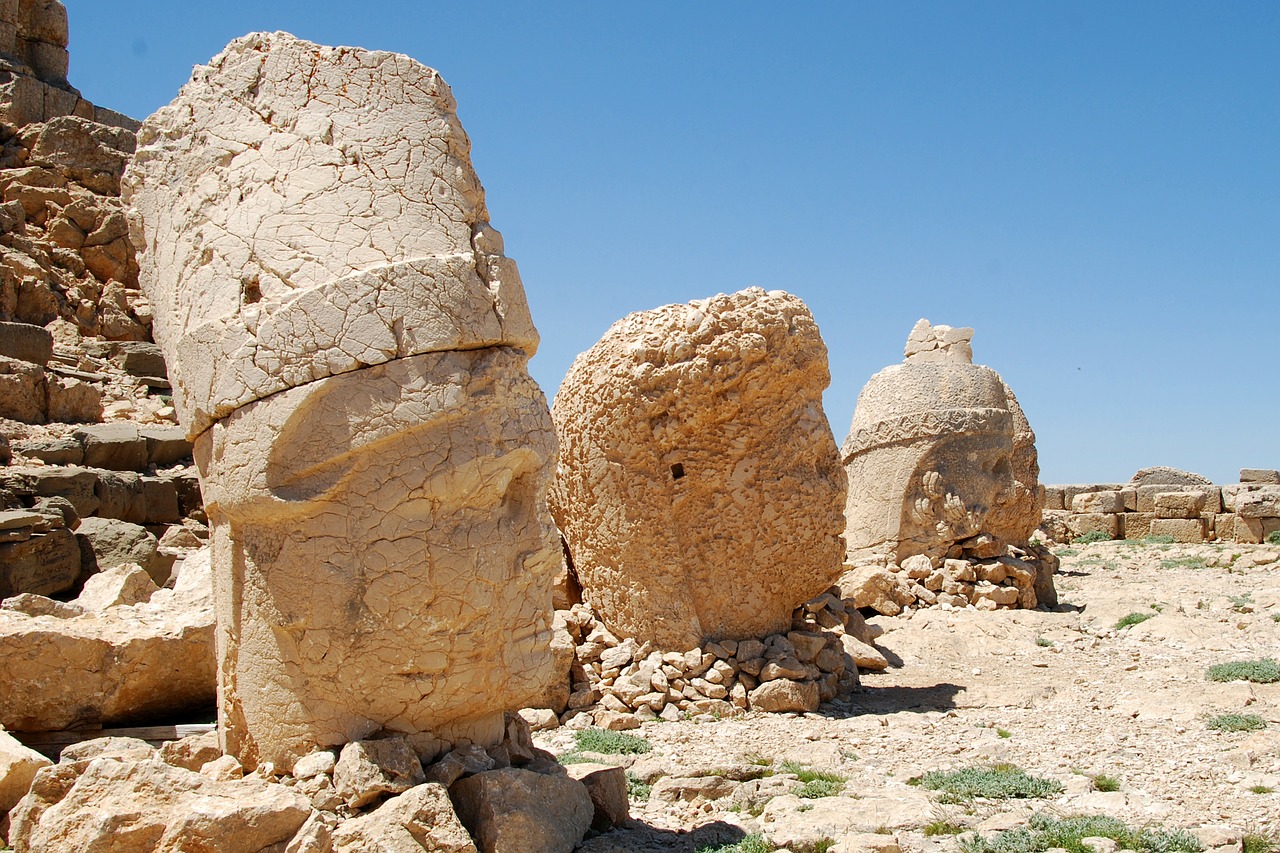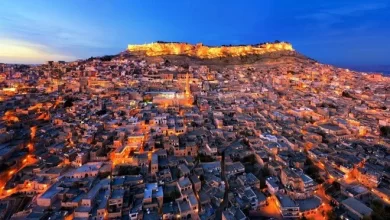- Things to do in Nemrut
Nemrut Mountain has been the subject of legends since ancient times, and today it is a place that attracts travelers interested in mountaineering, historical tourism and nature exploration. Defined as sacred by the Kingdom of Commagene, this mountain invites travelers to a mysterious adventure in the East with its unique landscapes, mausoleums and artistic works. Nemrut, a volcanic mountain, was included in the UNESCO World Heritage List in 1987 as both a natural monument and a historical artifact shaped by man. Nemrut Mountain, one of the peaks of the Taurus Mountains range, is considered among the most risky volcanoes that can be activated in Turkey. The height of Mount Nemrut is 2150 meters. The Kingdom of Commagene, which ruled here around the 1st century BC, has equipped Mount Nemrut with huge statues that still preserve their mysteries today.

History of Mount Nemrut?
On the high points of Mount Nemrut, the traces of a kingdom that existed from 750 BC until the 1st century AD await history buffs. This kingdom, established between the Tigris and Euphrates rivers, first lived under the yoke of the Assyrians and then the Macedonian Kingdom under the command of Alexander the Great. The kingdom gained its independence around the 2nd century BC. The colossal head sculptures placed on the mountain in the name of Antiochus I Theos Dikaios Epiphanes Philorhomaios Philhellen (I Antiokhos Theos), one of the most famous rulers of the Commagene Kingdom, are now described as Nemrut Ruins and every year they bring tens of thousands of history enthusiasts to Mount Nemrut.
Mount Nemrut, which is on the UNESCO World Cultural Heritage List, attracts the attention of the whole world with its ruins, sculptures and inscriptions from the Kingdom of Commagene. So, how was it that these sculptures on the top of the mountain were discovered? Did the climbers who wanted to see the summit found the statues?
The discovery of the ruins dates back to 1881. Engineer Karl Sester (Charles Sester), who was in charge of the exploration works carried out in the region within the framework of the road works carried out in Diyarbakır, reached the artifacts inherited from the Kingdom of Commagene; but he thought they belonged to the Assyrians.
After the news of the discovery spread, Otto Punchtein, a German archaeologist, went to Mount Nemrut via the Kahta district of Adıyaman with Osman Hamdi Bey, one of the most famous scientists of the period. Thanks to the help of Engineer Sester and a team of 6 people, most of the remains and documents in the area have been unearthed.
There was one Greek inscription among the finds. Thanks to this inscription, inferences could be made about the history of the region. According to the information written in the inscription, the works here were made in the name of Antiochos I, the King of Commagene. The inscription contains most details about the sculptures as if they were prepared for future visitors. Which gods are depicted, the names of important people in the Commagene royal family …
In short, the Kingdom of Commagene has left a registry behind it. The point that still preserves its mystery today is how such huge sculptures were made on the top of the mountain… Archaeologists agree that the limestone blocks on the mountain were already shaped there.

How to get to Mount Nemrut?
Mount Nemrut is close to Kayadibi Village in the Kahta district of Adıyaman. It is approximately 87 kilometers from Adıyaman city center. To start the trip, one must first go to Adıyaman. The most practical way to go to Adıyaman is air travel. After you go to Adıyaman, you can join the Nemrut tours here or you can reach the mountain environment by renting a car.







